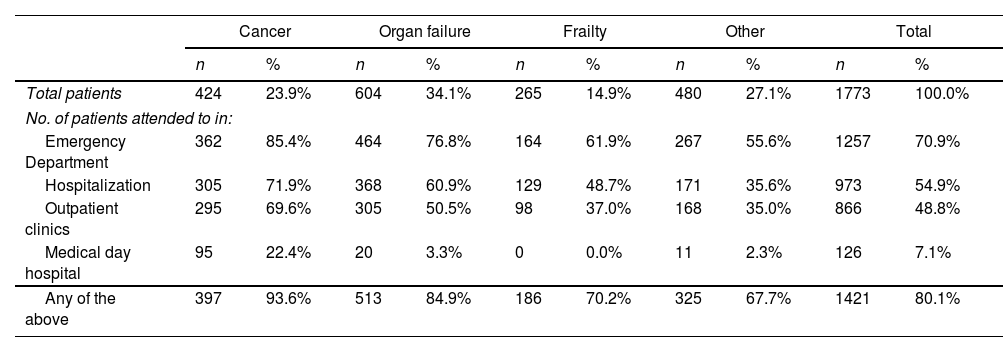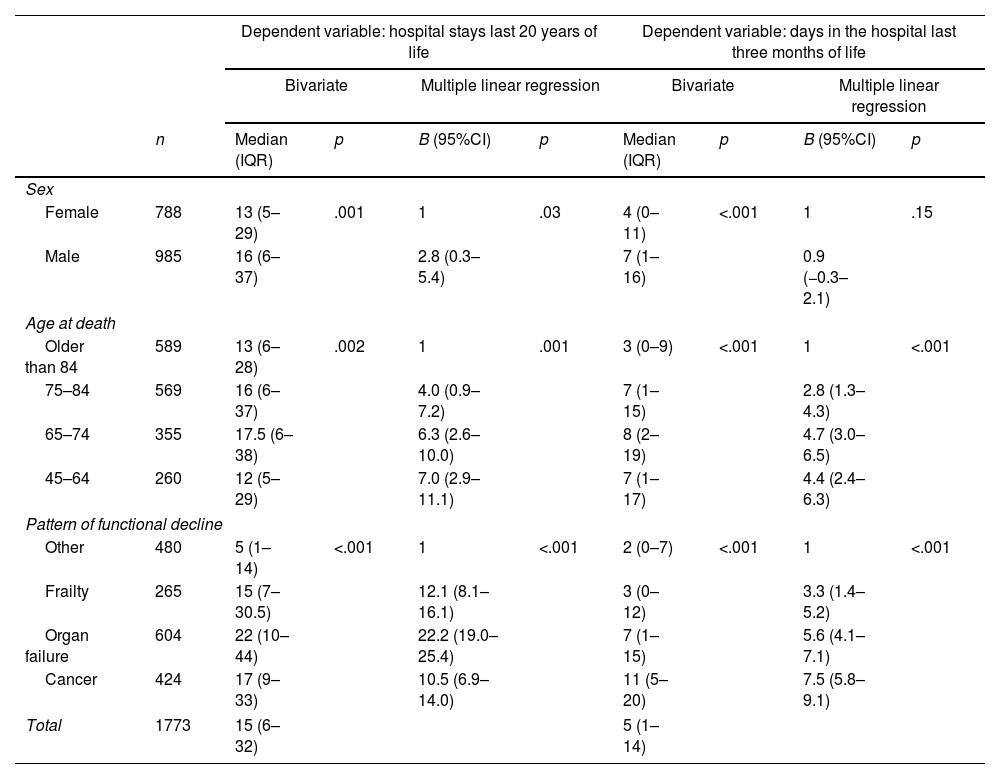There is an increasing need for end-of-life care due to society's progressive aging. This study aimed to describe how hospitalizations evolve long-term and in the last months life of a cohort of deceased patients.
MethodsThe study population were those who died in one year who lived in a district in southern Spain. The number of hospital stays over the previous 20 years and number of contacts with the emergency department, hospitalization, outpatient clinics, and medical day hospital in the last three months of life were determined. The analyses were stratified by age, sex, and pattern of functional decline.
ResultsThe study population included 1773 patients (82.5% of all who died in the district). The hospital stays during the last 20 years of life were concentrated in the last five years (66%) and specially in the last six months (32%). Eighty percent had contact with the hospital during their last three months of life. The older group had the minimun of stays over the last 20 years and contacts with the hospital in the last months of life.
ConclusionsThe majority of hospitalizations occur at the end of life and these admissions represent a significant part of an acute-care hospital's activity. The progressive prolongation of life does not have to go necessarily along with a proportional increase in hospital stays.
La necesidad de cuidados al final de la vida está en aumento debido al progresivo envejecimiento de la sociedad. El objetivo del estudio fue describir cómo evolucionan las hospitalizaciones a largo plazo y en los últimos meses de vida de una cohorte de pacientes fallecidos.
MetodologíaLa población a estudio fueron los fallecidos en un año residentes en un área hospitalaria del sur de España. Se calcularon las estancias en el hospital en los 20 años previos, y los contactos con urgencias, hospitalización, consultas y hospital de día en los últimos 3 meses de vida. Los análisis se estratificaron por edad, sexo y patrón de deterioro funcional.
ResultadosLa población a estudio fue de 1.773 pacientes (82,5% de los fallecidos en el área). Las estancias hospitalarias durante los últimos 20 años de vida se concentraron en los 5 últimos años (66%) y en especial en los últimos 6 meses (32%). El 80% de los pacientes tuvieron contacto con el hospital durante sus últimos 3 meses. El grupo de más edad tuvo el mínimo de estancias a lo largo de los últimos 20 años y de contactos con el hospital en los últimos meses de vida.
ConclusionesLa mayoría de las hospitalizaciones se producen al final de la vida y suponen una parte importante de la actividad de un hospital de agudos. La prolongación de la vida no necesariamente ha de ir acompañada de un aumento proporcional de las estancias hospitalarias.











